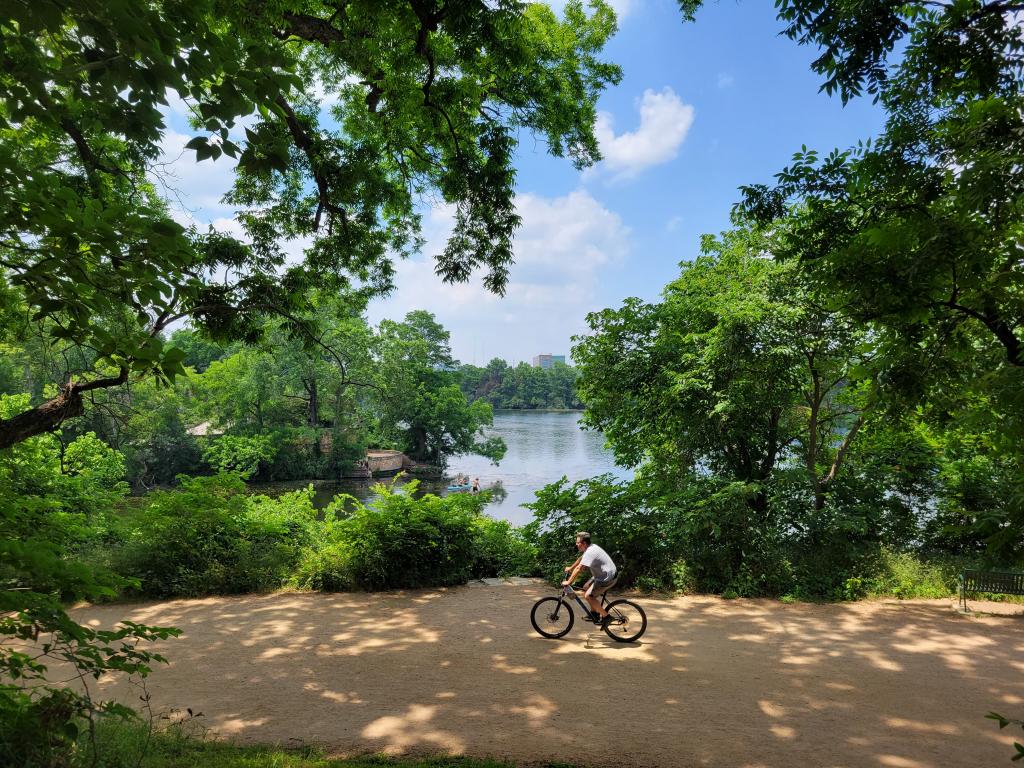Keep Cool and Stay Safe

Austinites pride themselves on staying active and enjoying our local green spaces, even during the region's infamously hot summers. What can you do to protect yourself from the heat? Staying hydrated and taking measures to keep yourself cool can help prevent heat-related illnesses like heat exhaustion or heat stroke. When outdoors, wear loose, lightweight, light-colored clothing, apply sunscreen and drink plenty of water to stay hydrated.
Symptoms of Heat Exhaustion and Heat Stroke
Recognizing the signs and symptoms of heat exhaustion, heat stroke, and heat cramps are an important part of heat preparedness.
Heat Exhaustion Symptoms include:
- Cool, pale, clammy skin
- Weakness
- Dizziness
- Heavy sweating
- Nausea or vomiting
- Fast, weak pulse
What to do for someone experiencing heat exhaustion:
- Cool them and move them
- Move victim to a cooler area immediately
- Loosen clothing
- Sip cool water slowly
If symptoms do not improve, last longer than an hour, or the victim begins vomiting, seek medical help. Heat exhaustion can quickly lead to heat stroke within minutes.
Heat Stroke Symptoms include:
- Hot, red, dry or damp skin
- Rapid and strong pulse
- Throbbing headache
- Confusion
- Nausea or dizziness
- Body temperature above 103 F.
- Lethargy or loss of consciousness
Heat stroke is a severe medical emergency that can cause death or permanent damage if emergency treatment is not given promptly. If you or someone you are with experiences symptoms of heat stroke, MOVE THEM, COOL THEM, CALL 911.
- Move the victim to a cooler area, preferably air-conditioned
- Reduce their body temperature with cool cloths or bath.
- Do NOT give fluids or anything by mouth to a person experiencing heat stroke.
Heat cramps are another heat-related illness that can progress into heat exhaustion or heat stroke if untreated. If you begin experiencing muscle or abdominal cramps in the heat, stop your physical activity, move to a cooler location, drink water and wait for the cramps to go away before doing any more physical activity. If the cramps last longer than an hour, or the person exhibits signs of heat exhaustion or heat stroke, call 911.
Stay Hydrated – You & Your Pet
You can help prevent heat-related illness by drinking water throughout the day. Avoid sugary or alcoholic beverages in the heat. Those working, exercising or playing outdoors for a prolonged period should consider adding an electrolyte g beverage to their regular water breaks. Drink water regularly, even if you are not thirsty, to avoid becoming dehydrated. Have a shady spot nearby to take frequent breaks as well.
If your pet joins you outdoors, bring plenty of drinking water for them as well. A collapsible bowl for them to drink from is recommended to make it easier for them to stay hydrated. Don’t let heat take out your furry sidekick. Remember asphalt and dark pavement can be very hot on pet’s feet that can burn or blister on hot pavement. Walk your pet on grass whenever possible and avoid walks on hot pavement or during the peak heat of the day.
Car Safety
Look before you lock! Never leave people or pets unattended in a closed car on a warm day. Temperatures in vehicles climb much faster and can reach dangerous temperatures in only a few minutes. On an 80-degree day outside, temperatures inside a vehicle can reach 94 degrees in two minutes and more than 120 degrees in less than an hour. Cracking the windows open does not significantly reduce how high the temperature inside the vehicle can reach.
To avoid leaving a child, pet, or someone else in the back seat of your vehicle, place something in the back seat you will need upon arriving to your destination like a purse, bag, or phone. This will force you to retrieve it from the back seat and remind you to look before you lock.
For more heat safety tips, please visit ReadyCentralTexas.org.
